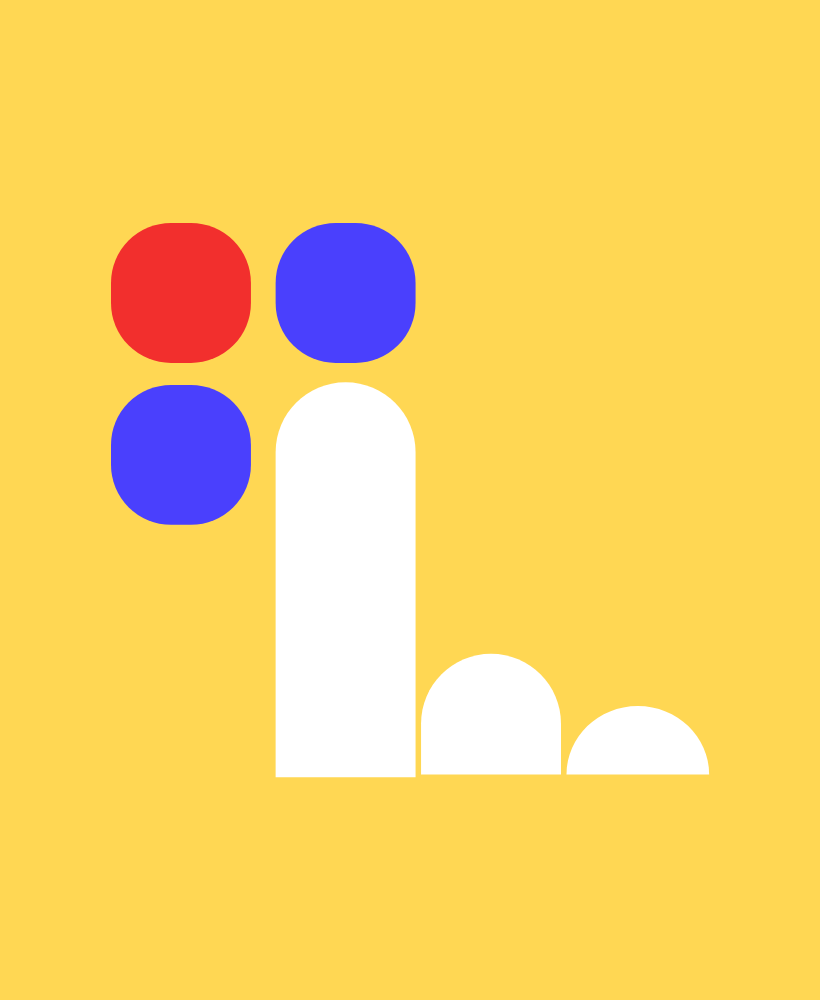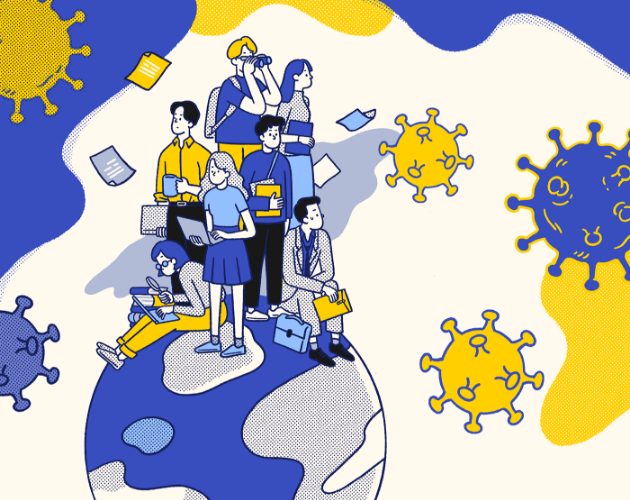Think you can design an interface that can be used by all people living on earth? Then it would be unscrupulous to wake you up from this dream. Just as it is not possible to agree with all of these people, waiting for an interface design to do this would be to invest in what is not possible.
Interface designers, content creators, and graphic artists invest in how a person will behave and feel when faced with a design product. By guessing this, they first shape their designs, then their designs and their users. What I learned is that the ideas that arise in these prediction environments where there are no real users are often wrong.
The idea of designing the interfaces that people communicate with in line with some principles emerged after the nineties. Certain design principles were put forward as a result of researches to provide people with an easier and more intuitive user experience. Some of the design principles have changed with the change of people in the past time. It is strange that the principles we have had, worked on and renewed for so many years are still negligible. What drives us here to this negligence; I guess relative beauty is preferred over objective usability.
Really Understanding People
While thinking in a design focus, aesthetic concerns can cover the human focus. It may be attractive to you to produce beautiful things that are impossible to use with the prediction that people will turn to the beautiful. Imagine you have a wonderful car inherited from your father. 1968 Ford Mustang. It's sparkling… But you don't go out and look for a tour on a Sunday afternoon. Because it doesn't work. Nice but unusable...
Understanding human is possible with understanding what human is. What makes us human. Are our physics features, the color of our skin, our limbs? No. The affective motivation we have is what makes us human. It's that abstract engine within us that makes us think, act, imagine, and make decisions. This engine no longer works with the system of people of the ice age. In the 21st century, the socioeconomic and sociocultural class we are in is updated with many external components that we cannot count, such as language, history, geography and our personal history. In order to create a human-oriented design, we must have real information about the real user.
Only we can plan the experience and design path that will enable such people to move from the emotional state they are in to the mood state we recommend.
In this article, we'll take a look at human behaviors that will balance minds and inspire a people-oriented design to avoid creating a design that scares and disappoints users.
1. People Scan With Their Eyes
A study once done by NNGroup on how people read web pages has revealed some shocking statistics. First, 79% of people simply scanned the new pages they encountered and read 16% of the words.
New studies by the same people have revealed that e-mail newsletters are read faster even from websites. Users are in a ruthless rush.
Faced with the fact that people will spend less than a minute on your website pages, an interface designer never has time to show off. What you need to do when you encounter such hasty and careless people is to use the first five seconds efficiently with perfect positioning. Never flood your entire story on users. Get attention in the first five seconds and provide a great summary that will convince them to stay.
Below are actionable steps that will not only help your design process achieve its purpose, but also help your users know what is about them and get their attention quickly:
- Adopt the Grouping Approach: The best way to help people browse through your browsing content is to make sure that things that are logically related are visually related. Visually associate the related contents with each other.
- Use plenty of headers: For the efficient design process, it's really impossible to stress enough the importance of creating hierarchies. Your headlines, subheadings, are essential to grab users' attention and keep them active. Headings explain what each chapter is about or whether it is suitable for the reader. Use headlines as much as possible.
- K.I.S.S. Never forget the concept. (Keep It Short and Simple): Short paragraphs and text are not only easy on the eyes, but also make reading completely simple and easy. On the contrary, long paragraphs make it difficult for readers to follow and therefore easily lose interest. In addition, long paragraphs are harder to scan with the eye than a few short paragraphs. Don't forget to adopt a legible typography in your simplification process.
- Make it easier by breaking the topic down into items: Make long sentences separated by commas into items and make them easier to read. In modern design, almost anything can be divided into substances. Thus, you can allow the user to feed more in a short time.
The focus on doing here is not to prevent people from browsing your page with their eyes. These people used to complain about paragraph questions in their exams in their youth. The situation is the same now. Make your page easy and fun to browse. Remember, you are trying to get them to scan for a longer time, not prevent them from scanning.
2. Everyone Want To Change, But Nobody Wants To Change
Although this is difficult and painful to admit, you should know that no one wants to change. People adapt to change only when they have to. In such a competitive market, it's impossible to force your customers to something.
The pioneers of interface design developed an icon language that people using different languages can understand. This is now a structure that has its own principles. Everyone knows that this icon means settings, even though there is no gear wheel in your mobile phone. The key to answer the phone is green, the key to end a call is red.
User interface designers should insist on using this language people have. Nobody wants to change. People are very happy about how they are. If you challenge them with new ideas that you believe are great, they will probably find you awkward.
You don't have to rebuild the wheel, even if you're enthusiastic about change. Just focus on improving things that work. Focus your love of innovation on the points you find problematic in your work.
Here are some suggestions;
- Use a System: Use a system that builds on people's previous habits. So you don't have to teach anyone to use your product. Developing products on such a system allows you to remain consistent throughout the entire structure.
- Follow Things That Work: Just like remixing a song… You don't have to bring in anything completely new. This is too risky.
For example, there is a reason why most mobile apps have a navigation tab at the bottom of the screen, as this is the closest to the thumbs that 89.9% of users interact with considering the way they hold their phones.
Good artists steal copies, great artists. Nothing is new. So find a blank and fill it. This method saves you time and prevents users from alienating.
3.People Don't Read Instructions
People don't read the instructions and directions especially when they are long. Websites give you links to read privacy and user agreements. How many have you read?
For this, you must be very clear and fluent in your interaction with the user. I guess you wouldn't want your content to be put in the corner like a user's manual.
When you need to give instructions to users, you have to be concise, clear and understandable. Make sure you give them a selectable button that leads to where you want them to be. People are careless and you are racing against time.
What about situations where reading lengthy instructions is really necessary? In these cases, visualizing the content may benefit you. This is the purpose of many images in a user manual. You can try to extend the attention span by enriching the long text with striking visuals. I even saw a website where the user agreement was designed as video content.
4. People are Emotional by Nature
This is nothing new that I am saying; people are emotional creatures. There is a belief that human behavior is linked to six basic emotions such as happiness, sadness, fear, anger, surprise, and disgust. Therefore, the psychology of color in UX / UI design tries to understand how human emotions relate to the use of different colors and manage their emotions with colors.
From adding personality to your design with colors and emotions, to empathizing with your users, you can do many things. By establishing a link between users and your product, you can help people adopt the product. Users want to be seen as human beings, not "website visitors". You can meet this expectation by thinking about design in the center of empathy.
As a professional designer, understanding human emotions gives you an advantage to start:
- Creating personal experiences for the user: When users believe that an experience is personalized for them, they tend to adopt products more.
- Add personality to a brand: Despite being in the computer age, people still want to interact with other people and be treated that way in every way. Including their emotions in the thought process while creating design interactions helps create a harmonious personality between your product and your user.
- Show empathy: Understanding and relating to the user's feelings goes a long way toward achieving your overall design goals. Since people are purely emotional, certain colors help portray certain emotions and empathize. For example, while yellow does a pretty good job of conveying an exciting message, a mixture of white and purple might be appropriate to portray elegance and tranquility.
- Reduce bounce rate: It has been proven that when people are emotionally active, they spend more time interacting than they normally would. In fact, emotional bonds help to catch and hold users' attention for as long as possible.
By establishing an emotional bond with the people who become your users, you can turn your relationship into a permanent form. As Neşet Ertaş, who is an expert on emotion, although he is not known for interface, said;
"The way, between a heart to another heart, is can not seen "
.png)



